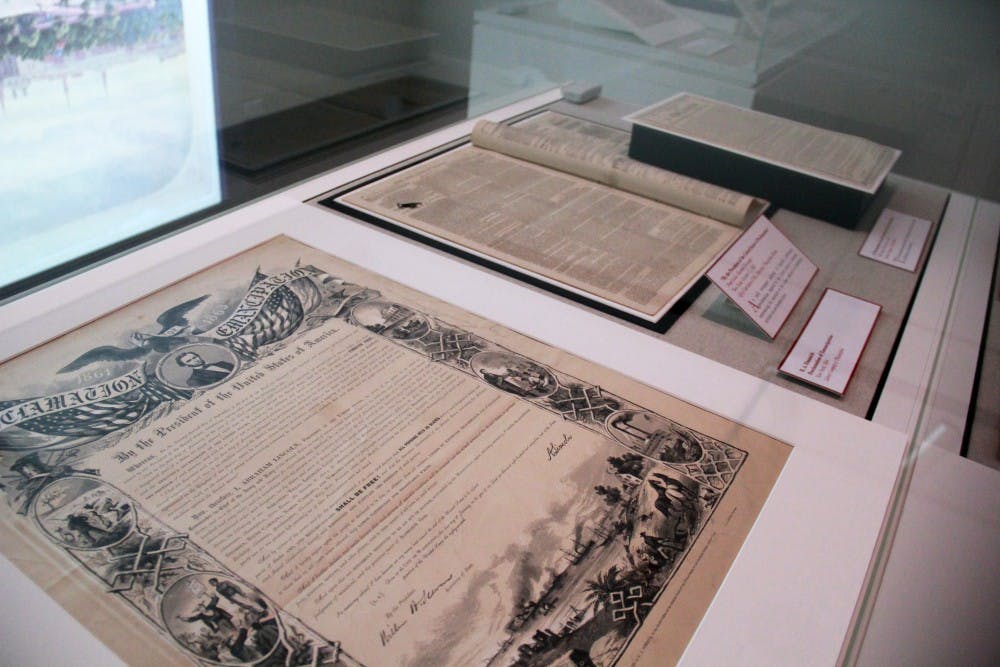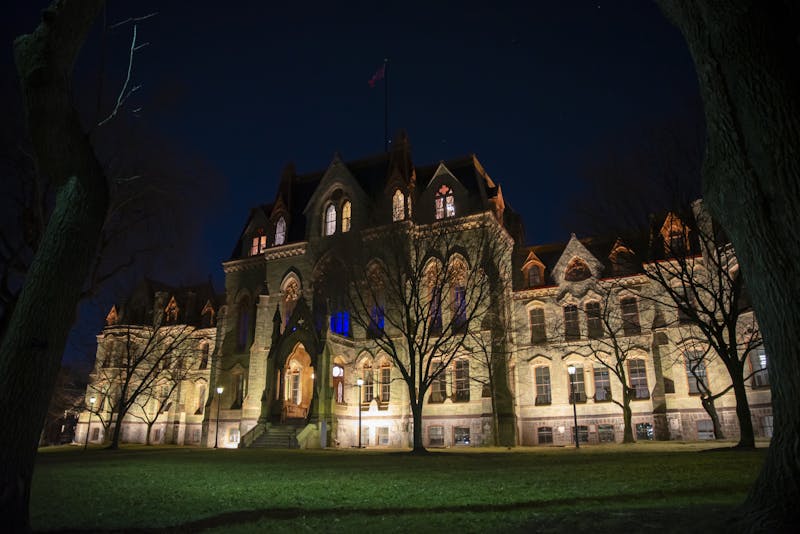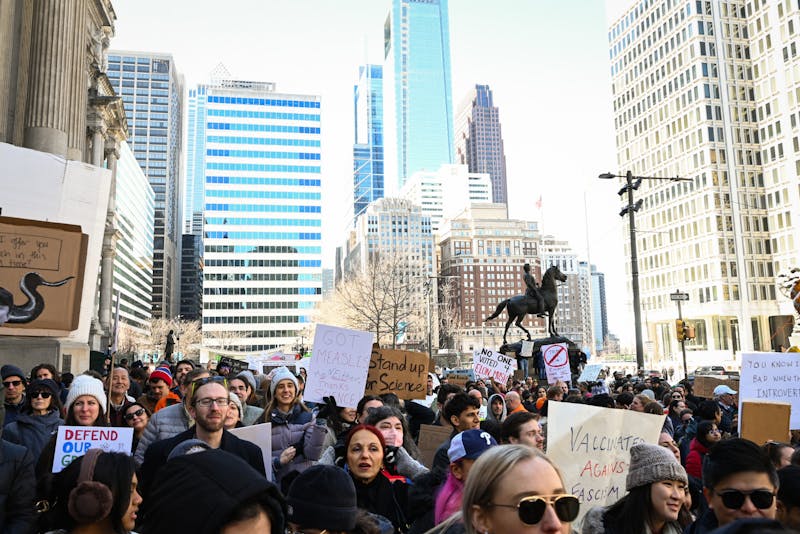
The Emancipation Proclamation is sitting amongst the stacks in Van Pelt Library. Abraham Lincoln’s legacy — and signature — is right on the sixth floor.
Two Lincoln-autographed copies of the document, along with other rare artifacts concerning its history, are being displayed in the new exhibit “The Great Emancipator and the Great Central Fair.” This free exhibit is open to the public in the Goldstein Family Gallery on the sixth floor of Van Pelt until Feb. 27.
The documents on display are two of the original 48 copies of the Emancipation Proclamation, which were printed and signed by Lincoln to be sold in the Philadelphia sanitary fair. One of the copies is owned by Penn Libraries, and the other is on loan from the collection of Ian and Sonnet McKinnon. In addition to the two signed copies, the exhibit also displays a manuscript copy of the 13th Amendment, historical pamphlets and newspaper printings of the proclamation.
Exhibition designer and coordinator Andrea Gottschalk said she thinks this display is very relevant to the recent activism about racial inequality. “Given that we’re still dealing with a lot of inequalities in our society today, it’s important to look at the history,” Gottschalk said. “The Emancipation Proclamation is something we need to go back to and think about some more as we think about how we can heal.”
The exhibit was created to be an accessible display of Philadelphia’s history. “It’s just an important part of our history, and I don’t think that many people get to see these kinds of documents,” Gottschalk said.
In light of the 150th anniversary of the Civil War, Co-Curators Mitch Fraas and Alexis Neumann used the exhibit to highlight the effects of the proclamation during the war. “The goal was to get people to see these things as a learning experience,” Fraas said. “We really wanted to build up a story around it ... we wanted to have a narrative more than just the documents themselves.”
The display especially showcases all the different versions of the artifact. Fraas said it is a great display of the different ways people were reading the document when it was issued. “I’d love to see people come in just to see the different way this document gets reproduced,” Fraas said. “I think we take for granted that these famous documents exist as one thing, but in fact, there are many different manifestations of them.”
All the panels and displays in the gallery portray the complicated history of the proclamation. “What I really wanted was for people to realize how complicated the Emancipation Proclamation was and that its effect isn’t simple,” Neumann said.
There are about 50 objects in the gallery, which are put together to give a new perspective of the Civil War time period. The exhibit is a rare opportunity to see famous historical documents in a different context. “I think this document holds such a large place in the minds of Americans,” Neumann said. “It’s alive in the minds of all of us.”
The Daily Pennsylvanian is an independent, student-run newspaper. Please consider making a donation to support the coverage that shapes the University. Your generosity ensures a future of strong journalism at Penn.
DonatePlease note All comments are eligible for publication in The Daily Pennsylvanian.







